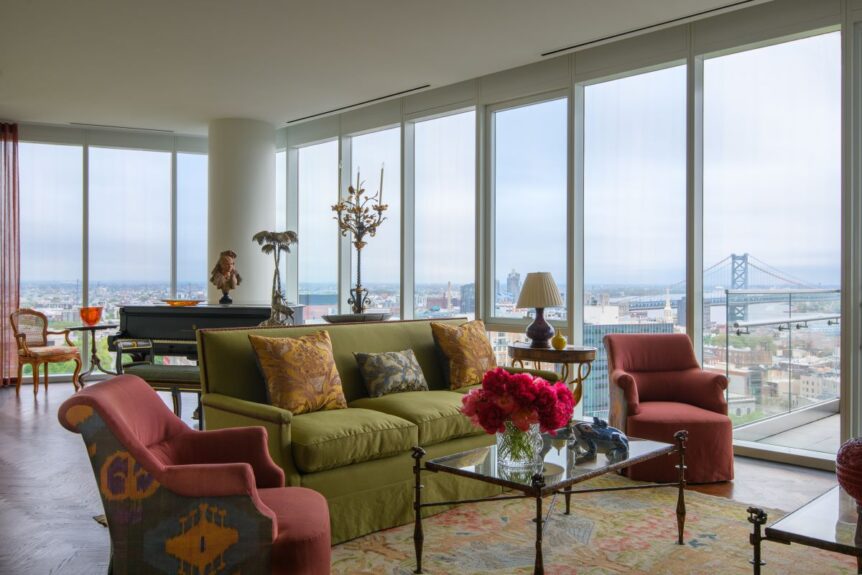
Works of art gathered with a focus on their possible future value do not comprise an “art collection.” They are called “inventory.” Real art collections are generally built in one of two ways, both of which require a genuine appreciation for art as a prerequisite. The first is through an intellectual and aesthetic fascination with the work of a particular artist, or school, or period. The other is from personal history—a collection grows along with the interests and experiences that we accrue as we age. The artworks become emblems of the things we have learned and the places we have been; they are aides-memoire to our stops on the path of life.
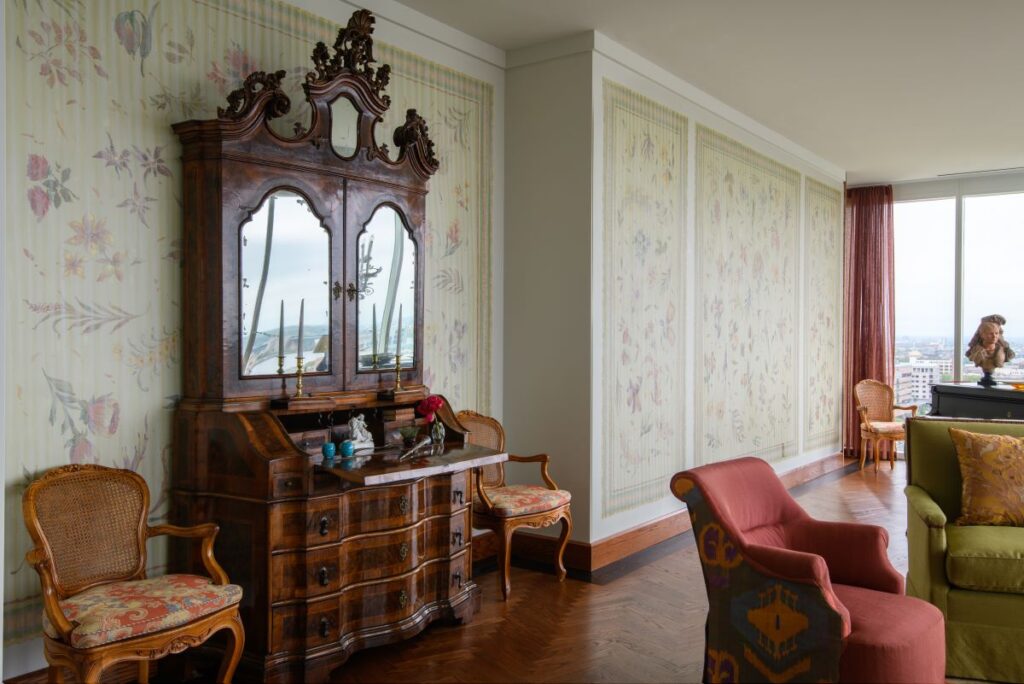
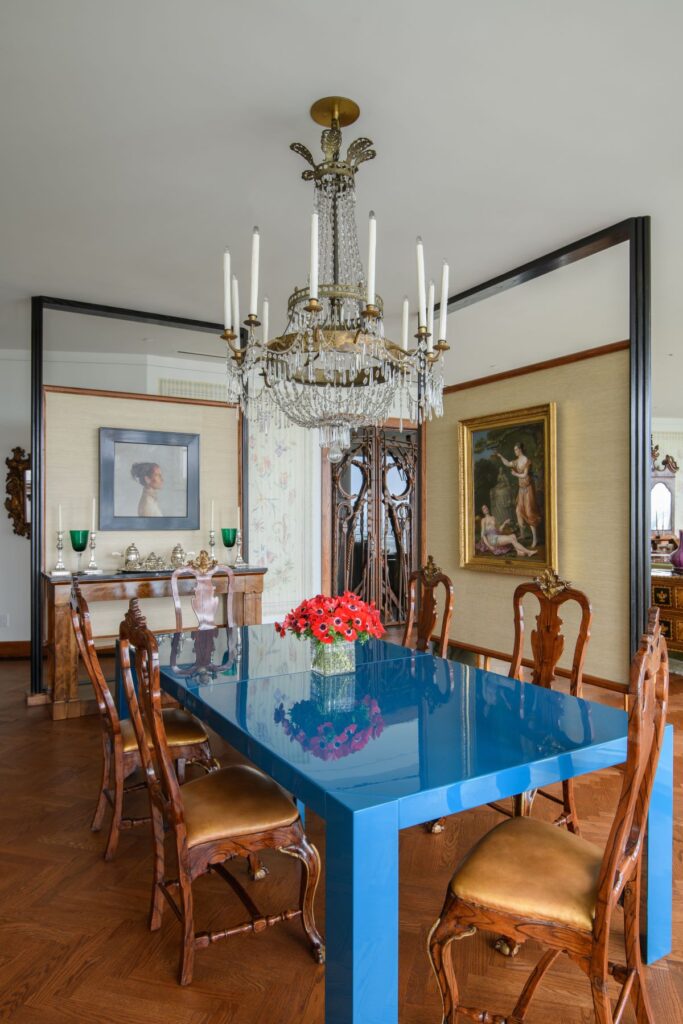
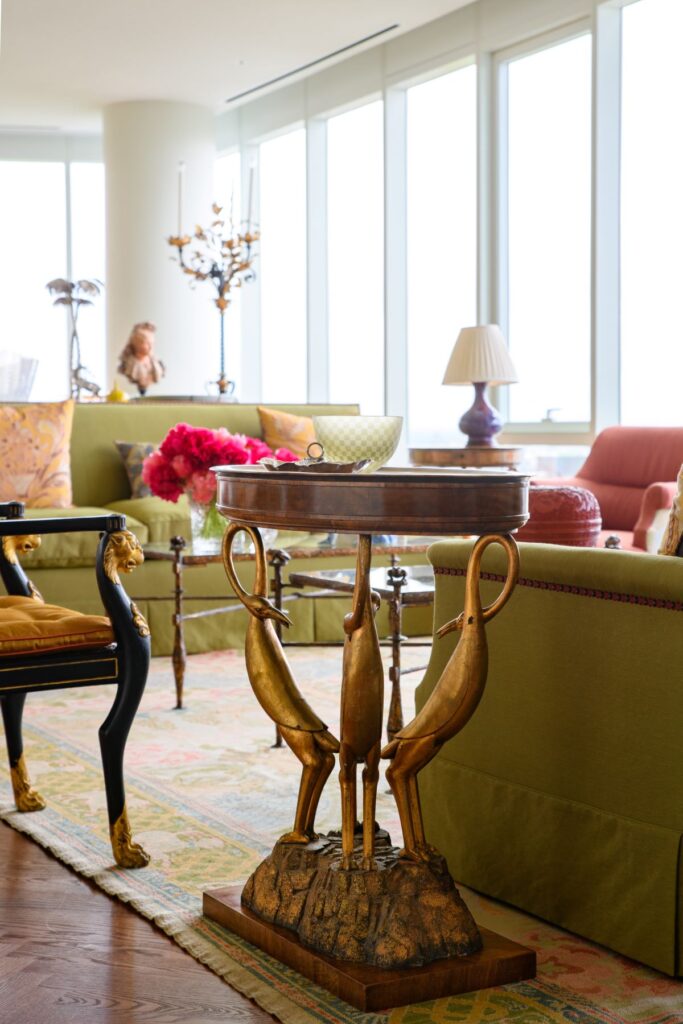
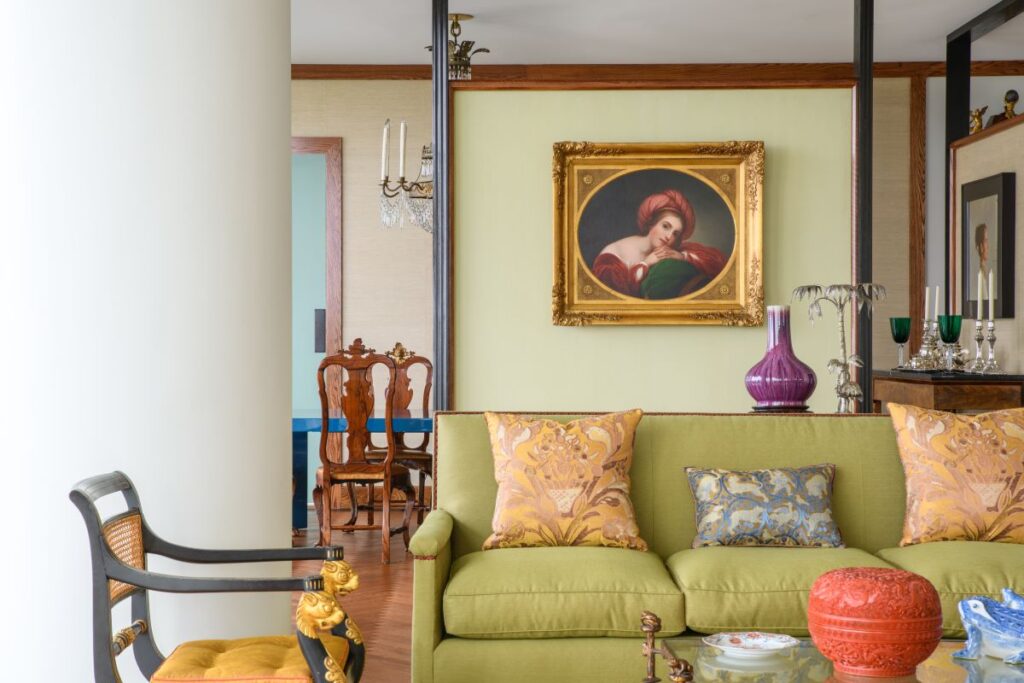
The owner of the collection shown on these pages—a retired real-estate developer and trustee of the Philadelphia Museum of Art—brought it together the second way. “I’ve never purposefully ‘collected’ in my life,” he says. “My first wife and I traveled extensively, and we always studied in advance the culture and history of the places we’d visit. We had an idea in advance on the art that might best represent the place, and we learned more there. We always brought home pieces that we liked to look at and live with and that would remind us of our travels.”
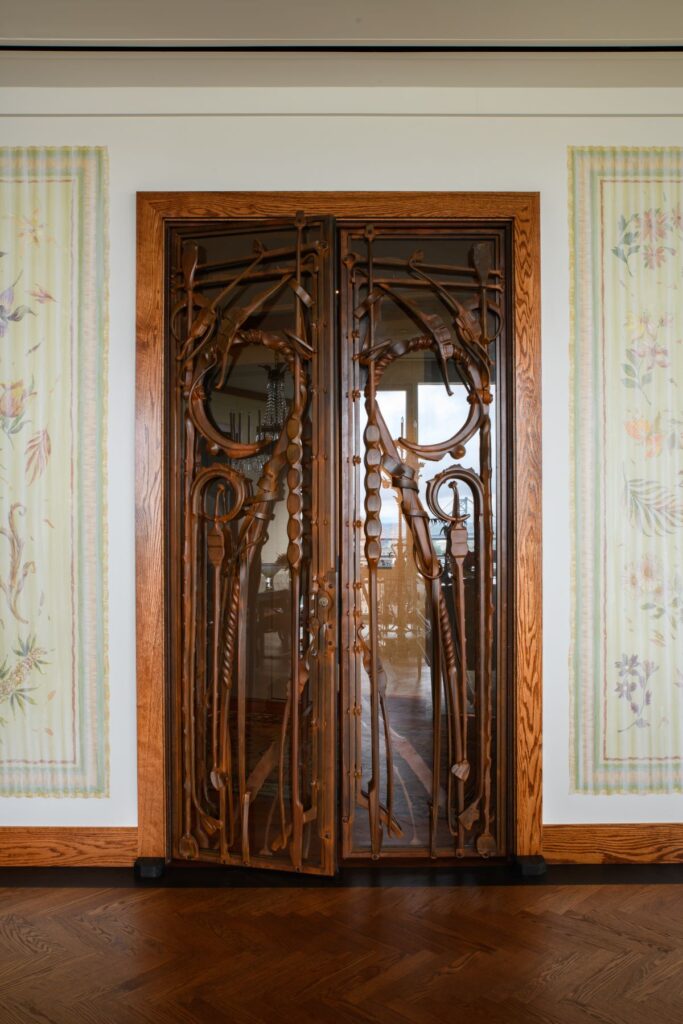
At home, of course, introductions to new artists and periods in art history expanded opportunities to add to the works they admired. The approach explains the breadth of the collection, which ranges from Asian ceramics and lacquer and eighteenth-century European furniture and decorative arts to nineteenth-century American paintings and contemporary sculpture and photography.
When they moved from a four-story, nineteenth-century Philadelphia town house to an apartment in one of the city’s newer downtown residential towers, the trustee and his second wife wondered whether a collection assembled mainly from travel would travel well itself. The full-floor apartment, which commands panoramic views that take in historical sites such as Independence Hall as well as the Delaware River-scape, was purchased as raw space. The two enlisted their longtime decorator, Thomas Jayne, to organize the layout and the interior design. As well-credentialed a classicist as there is—having studied at Winterthur and Historic Deerfield and elsewhere—Jayne is nonetheless adept at finding harmony between old and new. He was also qualified to advise on the inevitable, dreaded downsizing of a collection that attends such a household move.
One keeper was a nearly nine-foot-tall eighteenth-century Italian secretary, which is the centerpiece of the living area decor and a counterpoint to the sweeping views (Fig. 2). It is a statement piece and was meant to be, as Jayne explains: the larger the secretary, the more business interests it suggested you had. It is joined by such furnishings as a Steinway piano, parcel-gilt Regency armchairs, and a pair of striking side tables with supports in the shape of cranes, which Jayne believes to be Italian and from the early nineteenth century (Fig. 4). Upholstered seating rounds out the decor, with color cues taken from a Spanish rug purchased from the New York carpet dealer Nazmiyal (Fig. 1).
Though the main public rooms are kept open plan in Jayne’s layout scheme, the trustee wanted a these-days old-fashioned design element: a dining room where guests could focus on each other (Fig. 3). To preserve the sense of airiness, Jayne hit on an elegant solution. The dining area is surrounded by a series of large panels, each held between floor-to-ceiling supports, that define the space and serve as another place to display art, including Odalisque, attributed to Rembrandt Peale (Fig. 5). The space is furnished with Portuguese chairs in the Chippendale style, some original eighteenth century, some twentieth-century facsimiles. They surround a Parsons table designed by Karl Springer, which Jayne had relacquered in bright blue, covering its original finish in mauve—a color now exiled from the interior design playbook.
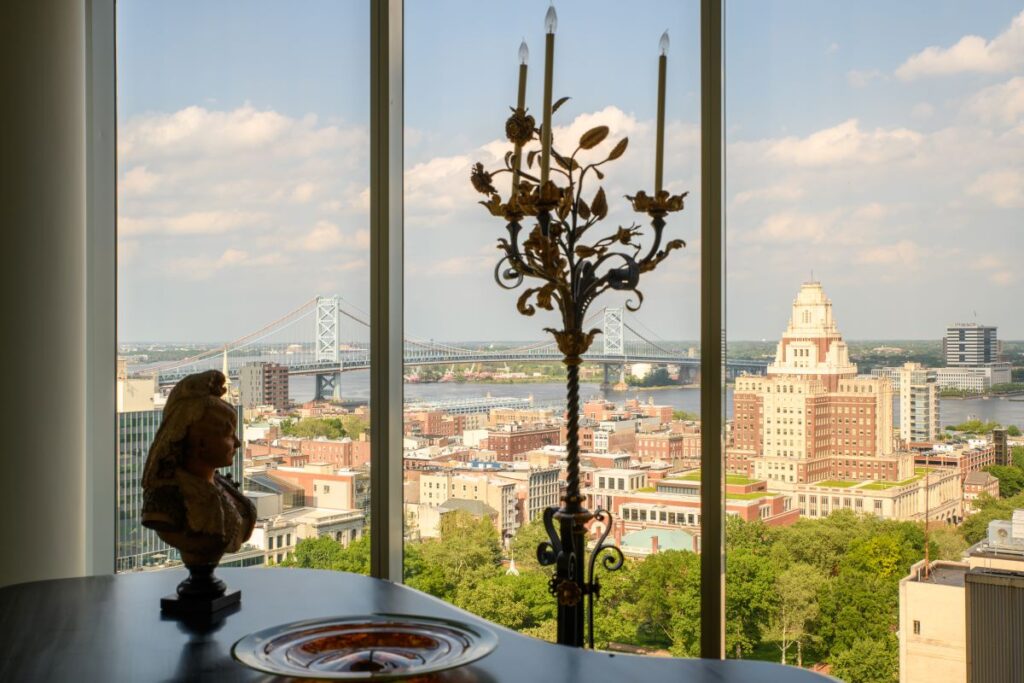
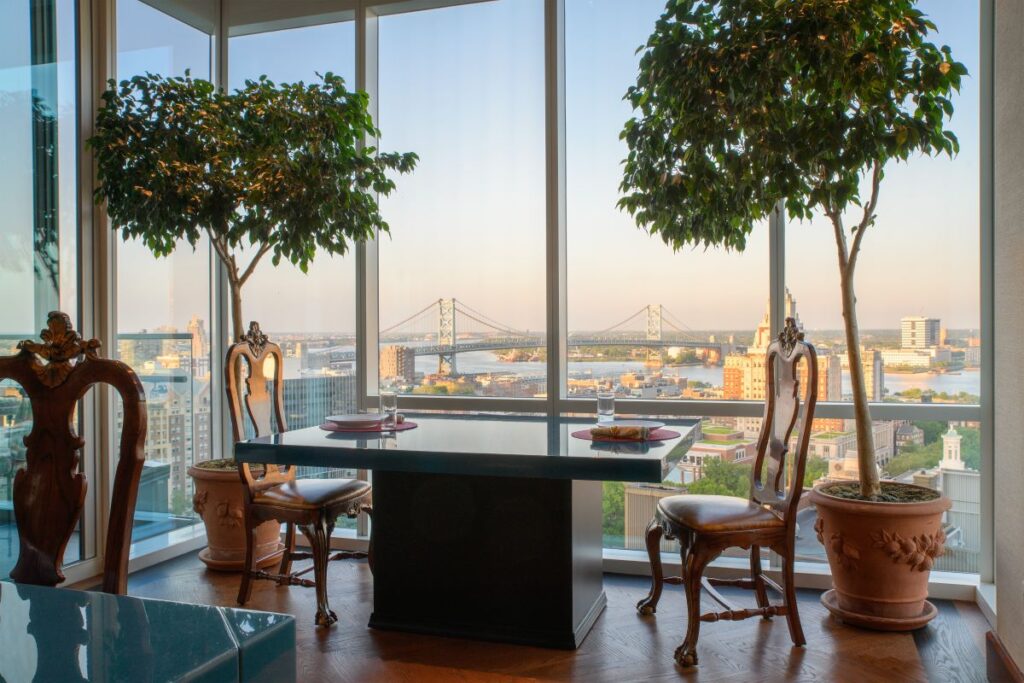
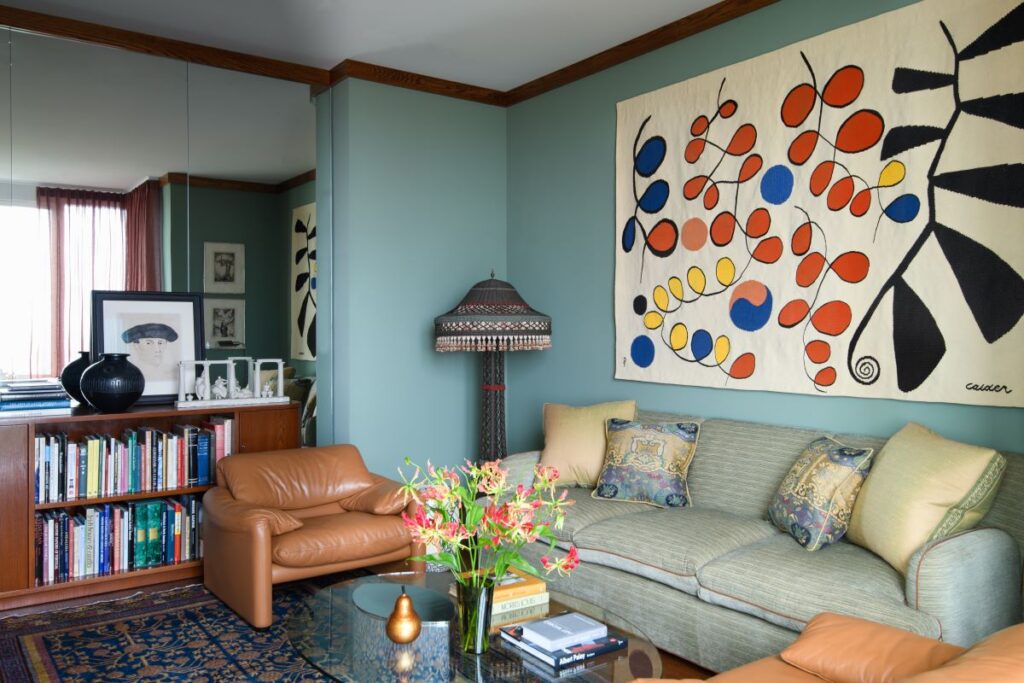
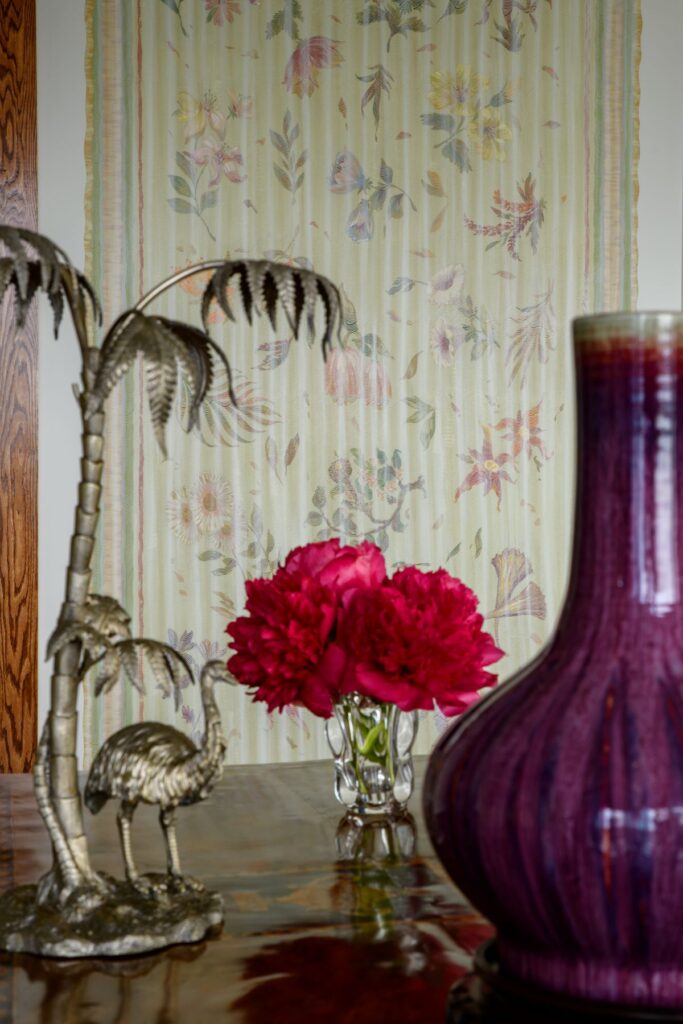
Several design flourishes and accents add more flavor to the interiors. One of the most prominent greets visitors as they enter the apartment from the elevator foyer: a pair of patinated-iron gates, sinuous and surreal, designed by the sculptor Albert Paley on commission from the trustee (Fig. 6). From his collection, Jayne included eye-catching pieces such as an 1890s iron standing candelabra (Fig. 7)—like the gates, a nod to Philadelphia’s rich metalworking history—and an English silver-plated centerpiece in the form of an ostrich standing beneath palm trees (Fig. 10). Jayne also brought in New York–based decorative artist Pierre Finkelstein, who painted the living area wall sections in a gauzy floral motif that resembles nineteenth-century dressing-room screens and further mediate between the modern architecture and the antique furniture.
“We’ve had many clients who have moved from traditional homes to modern spaces and they never have to change their collecting habits,” Jayne says. “This apartment is another example of how comfortably old and new can live together.”

